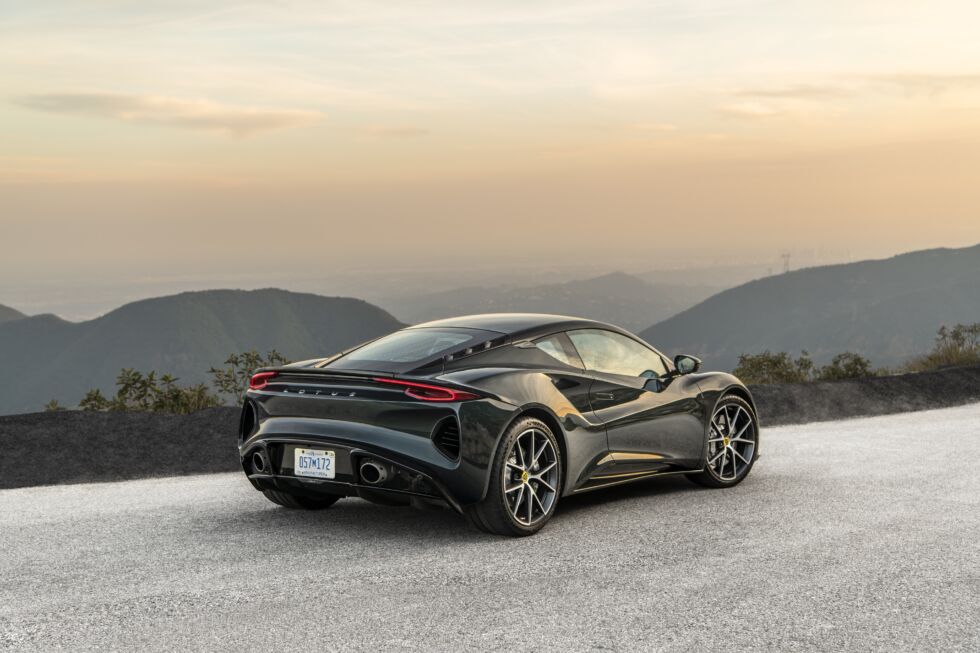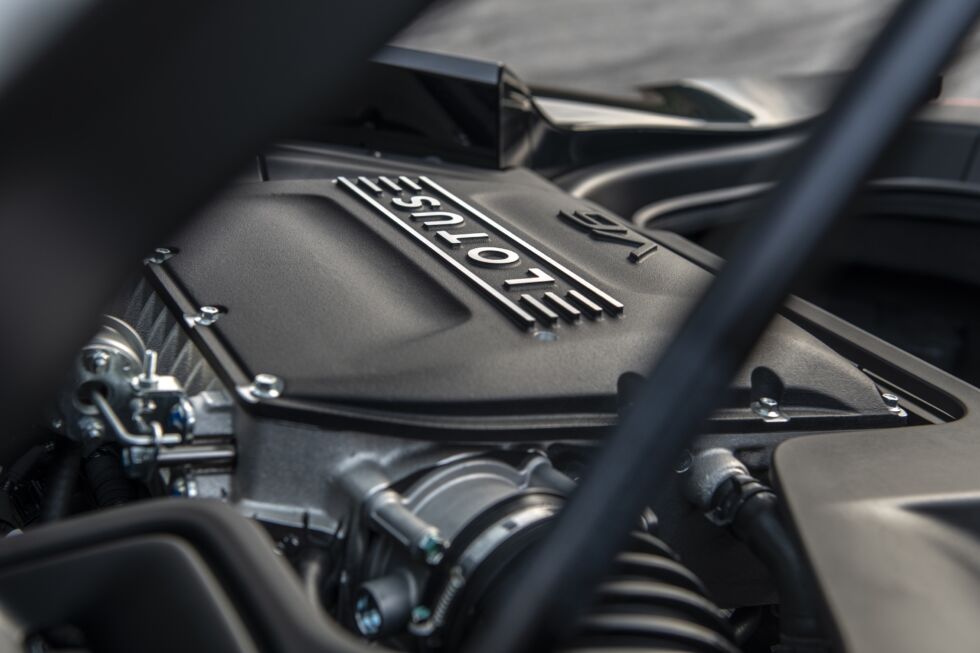
The auto industry’s gung-ho shift to electrification is particularly nail-biting for a company as historically behind the times—”analog,” if I’m being polite—as Lotus. So before the company completely upends its lineage and launches—gasp!—an electric SUV, Lotus has one final offering to satiate the pearl-clutching purists of internal combustion: the Emira. Though ironically, the best attributes about this car have nothing to do with its engine.
Effectively picking up where the Lotus Evora GT left off, the Emira rights many of its predecessor’s wrongs. The Emira’s cockpit comfortably cocoons two passengers, as Lotus finally realized what the rest of the world knew all along, that the Evora’s rear seats were completely useless. The Emira’s cabin is also vastly better appointed, with soft leather and suede-trimmed surfaces. Sure, the coupe’s switchgear remains hilariously outdated, but at least the Emira uses the solid-feeling buttons and toggles from a 10-year-old Volvo (thanks, daddy Geely) as opposed to the Evora, which had crap-tastic plastic bits from a 20-year-old Ford.
The Emira also does away with the Evora’s I-got-this-on-sale-at-Best-Buy Alpine-branded multimedia head unit and instead relies on a 10.2-inch touchscreen for infotainment duties. This software is by no means cutting-edge; it brings Lotus into the 2010s at best. But at least Apple CarPlay and Android Auto connect wirelessly, which is pretty much all you need.

Unimposing as it appears in this demure shade of Dark Verdant green, the Emira is quite stunning in person. Nods to Lotus’ electric Evija hypercar are evident in the Emira’s design, particularly up front, where the sloping hood’s air passageways flank slim headlight housings. The body sculpting is fantastic, and I love the way this car looks in profile, particularly with my First Edition tester’s 20-inch wheels. This is a deeply pretty car—one that will surely turn heads because of its beauty, if not its rarity.
A wisp over 3,200 pounds (1,450 kg), the Emira V6 First Edition is heavier than the Evora, but squarely competes with Porsche’s 718 Cayman. A bit of weight savings will likely come later this year when the Emira gains an optional smaller-displacement 2.0 L turbocharged inline-four engine and nine-speed dual-clutch transmission—a powerplant borrowed from Mercedes-AMG.
For now, though, the Emira’s sole engine choice is a Toyota-sourced 3.5 L V6—the same one you’ll find in a decade-old Camry—fitted with an Edelbrock supercharger to deliver a healthy 400 hp (298 kW) and 310 lb-ft (420 Nm) of torque through a 6-speed manual transmission. Opting for Lotus’ 6-speed automatic gearbox will net you an additional 7 lb-ft (9 Nm) of twist thanks to its traditional torque converter, but this isn’t a performance improvement you will ever notice.

Besides, I can’t imagine driving an Emira with an automatic transmission, no matter how sophisticated it might be. The manual is just so gosh darn satisfying to use. The clutch is heavy and has a clear bite point closer to the Emira’s firewall, and the shifter itself is a boon for tactile engagement. I’m honestly hard-pressed to think of a better sports car gearbox.
I’d also be remiss not to mention the exposed stick-shift linkage that’s visible below the Emira’s center console. These metal innards are partially obscured by some netting to prevent a cell phone or Crunchwrap Supreme from falling into the depths of the transmission tunnel. It’s a fully on-display reminder of the Emira’s anachronic underpinnings and one of my absolute favorite design details.
Starting the Evora is as simple as lifting the bright red ignition cover (what is this, a Lamborghini?) and pushing the engine start button. You might not see the significance in this otherwise reflexive task, but prior Lotuses—Evora included—required the driver to execute a precise order of operations from unlocking the car, inserting the key into a steering column-mounted ignition, and then pushing a start button all within 30 seconds. Failing to do this would cause the car to freak out, shut down, and make you start over. Sometimes the alarm would even go off. What a treat.
https://arstechnica.com/?p=1948805

